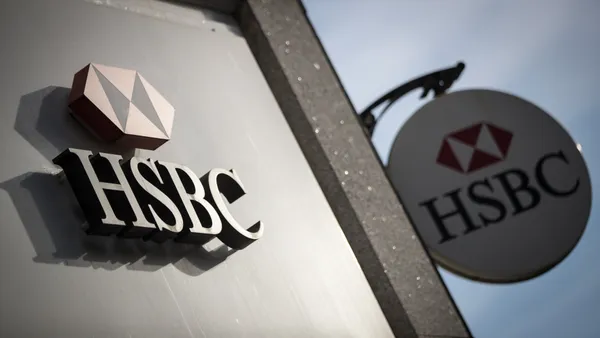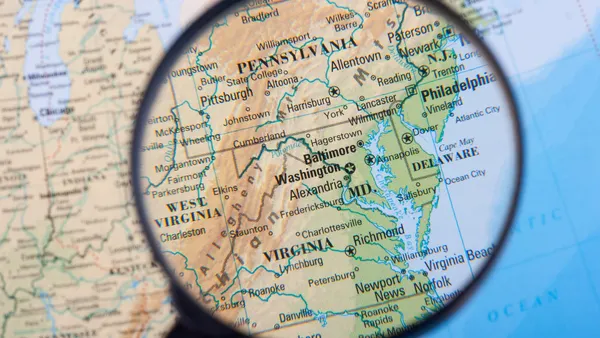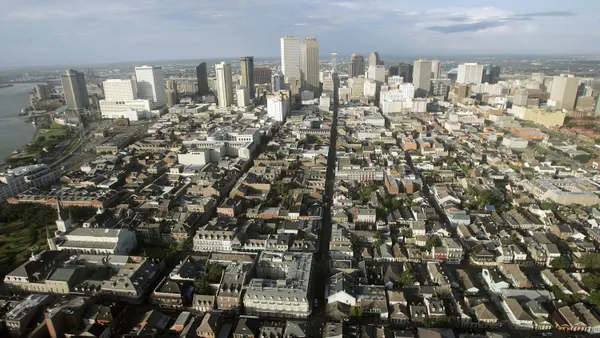Dive Brief:
- Bank branch consolidation is continuing at a significant pace, mainly as the country’s largest banks downsize their real estate footprint, but community and regional banks are taking up some of the slack with pushes into new areas, according to the 2020 branch banking report by commercial real estate company JLL.
- Banks closed 3,164 branches last year, bringing the total loss of branches to about 13,200 since the industry hit its peak in 2009 at about 100,000 branches, according to the report.
- Christian Beaudoin and Walter Bialas, the two JLL analysts who oversaw the research, say the industry will likely continue to consolidate branches at a rate of about 2% a year because reduced space is part of banks’ efforts to “integrate physical branches with digital platforms."
Dive Insight:
Most of the branch closures last year were by large banks. Of the more than 3,000 that went away, 1,777, or almost 60%, were closed by the 25 largest banks.
Most of the new branches are being opened by community and regional banks. They accounted for roughly 1,200 of 1,500 new branches, or about four-fifths of the total.

The new branches tend to be quite a bit smaller than the ones that go away, typically 2,000 to 3,500 square feet compared to 5,000 to 7,000 square feet.
The reason isn’t because business is slowing down. In fact, despite the reduction in branches, banking as an industry is attracting more deposits than ever. Deposits grew 4.1% last year, bringing the total amount to $12.8 trillion, or about $148 million per bank branch. That's about twice the average bank branch amount in 2009.
The smaller branch size is instead an accommodation to technology, the analysts said. Banks simply don’t need as much space any more.
Of the branches that went away, almost 20% were turned into restaurants and 17% into health clinics. About 7% were sold to other banks and became those smaller, tech-focused branches the report talks about.














